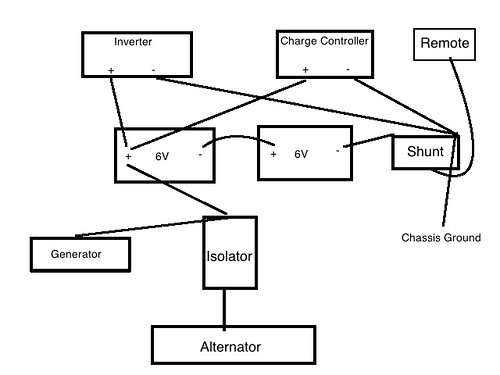pNuker
Dec 01, 2012Explorer
Battery Isolator Not Working
I just installed a new pair of 6V batteries and rewired everything pretty much the same way, except for wiring them in series. Everything's working great except for the isolator that is supposed to give me a charge from the alternator. It's not giving me any juice when the engine is turned on anymore. The generator is providing charge just fine, although it's on the cabin side of the isolator.
Here's a quick diagram of my basic wiring:

Do I have everything wired correctly? If so, maybe my isolator has gone bad. I did accidentally touch it with a wire when I was removing the old batteries and it gave off a few sparks.
Here's a quick diagram of my basic wiring:

Do I have everything wired correctly? If so, maybe my isolator has gone bad. I did accidentally touch it with a wire when I was removing the old batteries and it gave off a few sparks.
